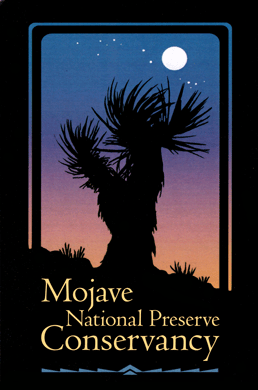If you are a regular in the Mojave National Preserve, chances are you have hiked the Teutonia Peak Trail. And if you've never been to the Preserve before, it's a must-see. I have hiked Teutonia four times, and each time I saw or learned something new, and the views make me want to return.
Teutonia Peak in the distance.
Teutonia Peak Trail is a little over three miles (roundtrip) and takes you through a Joshua tree woodland mixed with shrubs and cactus. As the trail proceeds, you see more juniper mixing in - the juniper and Joshua trees support a robust diversity of birds. The majority of the trail is flat with the exception of a relatively short and moderate incline up a granite outcrop that offers great views of Cima Dome (more later) and multiple desert mountain ranges in the distance.
Getting to the trail is easy. The trailhead is right off Cima Road, just 12 miles south of Interstate 15 (Cima exit), so it's a good way to stretch your legs if you need a break from highway driving. Driving south on Cima Road, the trailhead is on your right.
Don't Overlook the Little Guy
Blackbrush in bloom (Coleogyne ramosissima ) Photo Credit: Stan Shebs
The Joshua tree woodland you'll see on this trail is the largest in the world. Because of this extensive woodland, there are more Joshua trees in the Preserve than in Joshua Tree National Park. Although the Joshua trees may be the star attraction, there is a very unassuming plant that plays a big role in the success of Joshua trees here. The hardy blackbrush is a common shrub that is estimated to live around 400 years, and provides a shelter of sorts for Joshua tree seedlings (as well as for other desert plants). A Joshua tree seed that sprouts under a blackbrush has key advantages over a Joshua tree that sprouts from bare soil, including protection from harsh sun and temperatures during the tree's vulnerable early years, shielding from some herbivores that might take a bite out of the young Joshua tree. Look closely during the hike and you may spot some young Joshua trees or other plants (especially cholla cactus) growing up from the middle of one of these blackbrush shrubs.
Walking on the Dome
You can see the curvature of Cima Dome from the western edge of the Teutonia Peak Trail after you climb the granite outcrop.
Another potentially overlooked but fascinating aspect of Teutonia Peak Trail is that you're hiking on a massive geologic feature in the Preserve. You're on the eastern edge of Cima Dome, where the Earth's surface was uplifted by volacanic activity long-ago like a giant and nearly symmetric blister. You can see a bit of the curvature of Cima Dome once you climb the granite outcrop and cross over the saddle to the western side.
But because the trail is actuall on Cima Dome, it is difficult to appreciate the magnitude of this geologic feature. For a more impressive view of the Dome, head out to Cedar Canyon Road just off of Kelso-Cima Road in the Preserve. From there you'll see the granite outcrop that you climbed as part of the Teutonia Peak trail, and how small it is in comparison to the giant Cima Dome.
This shot was taken from near Cedar Canyon Road, but it shows the awesome magnitude of the Cima Dome - the gentle curvature you see on the horizon. That outcrop on the side of the Dome - just right of center - is Teutonia Peak.
See below for a map marking the location of the Teutonia Peak trailhead.

